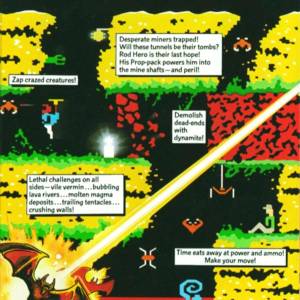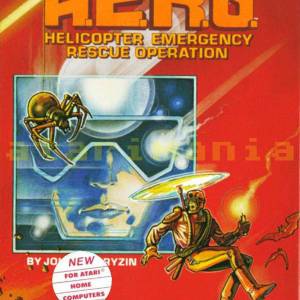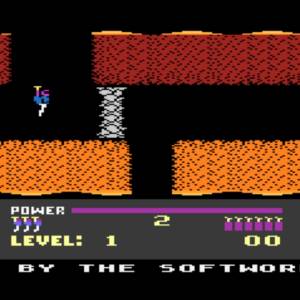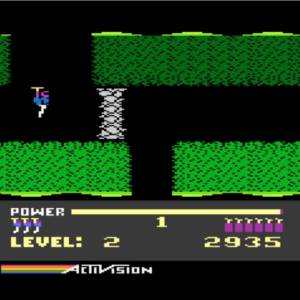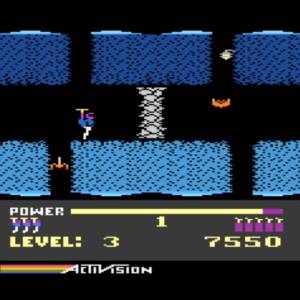H.E.R.O. on Atari XL/XE: A Classic Platformer from the 1980s
| Release Information | |
|---|---|
| Release Date | 1984 |
| Publishers | Activision |
| Download Game files |
H.E.R.O. (Helicopter Emergency Rescue Operation), designed by John Van Ryzin and published by Activision in 1984, is one of the most acclaimed games for 8-bit Atari computers, including the XL and XE models. Originally developed for the Atari 2600, it was successfully adapted for the Atari 400/800/XL/XE, delivering an unforgettable experience with its innovative gameplay, colorful graphics, and engaging storyline. This article explores the details of H.E.R.O. on the Atari XL/XE, its mechanics, development history, and lasting legacy in the world of retro gaming.
History and Background
H.E.R.O. debuted in March 1984 on the Atari 2600 and was later ported to Atari 8-bit computers, including the XL and XE models, in the third quarter of 1984. The game was created following feedback from testers who found Van Ryzin's earlier project, Cosmic Commuter, lacking engagement. Inspired by comic book superheroes, Van Ryzin developed H.E.R.O., casting players as Roderick Hero—a brave protagonist equipped with a jetpack, laser, and dynamite, tasked with rescuing trapped miners in underground mines.
The Atari XL/XE version retained the core essence of the original but leveraged the enhanced processing power of 8-bit Atari computers to deliver improved graphics and smoother gameplay compared to the Atari 2600 version. The game quickly gained praise for its innovative approach to the platformer genre, blending exploration, action, and puzzle-solving elements.
Gameplay Mechanics
In H.E.R.O., players control Roderick Hero as he navigates labyrinthine underground mines to rescue trapped miners. The gameplay revolves around three key pieces of equipment:
- Prop-pack (Jetpack): Allows Roderick to move freely in any direction, a novel feature compared to other platformers of the era, such as Donkey Kong or Pitfall!, which restricted movement to jumps or ladder climbing.
- Laser: Used to eliminate enemies like spiders, bats, and snakes lurking in the mines.
- Dynamite: Enables players to destroy walls blocking the path to the goal, though caution is required as explosions can harm the player.
Players must avoid obstacles like lava, water, and collapsing platforms while managing limited dynamite and jetpack energy. Each level concludes with rescuing a miner, who waves joyfully upon being saved, adding charm and satisfaction to the experience.
The Atari XL/XE version offered smoother gameplay than its Atari 2600 counterpart, with a 256-color palette (16 colors with 16 shades) enabling more detailed and vibrant sprites. The game also featured varying difficulty levels, increasing the challenge as players progressed.
Technical Aspects on Atari XL/XE
Atari XL/XE computers, powered by the MOS 6502C “Sally” microprocessor clocked at 1.77 MHz (PAL) or 1.79 MHz (NTSC), provided a robust platform for H.E.R.O.. The ANTIC and GTIA graphics chips supported resolutions up to 320×192 pixels and a 256-color palette, allowing for high-quality visuals. The POKEY chip delivered distinctive sound effects that, while simple, effectively built the atmosphere of underground mines.
The game was compatible with all Atari XL/XE models, including the 600XL, 800XL, 65XE, 130XE, and the Atari XEGS console. Distributed on a cartridge, the game’s size was approximately 16 KB, enabling fast loading even on older models like the Atari 800.
Reception and Legacy
H.E.R.O. received enthusiastic reviews from both players and critics. Computer and Video Games magazine praised its colorful graphics and engaging gameplay, calling it one of the best games for the Atari 2600, with the Atari XL/XE version considered even more polished. Brett Weiss, in his book on top console games from 1977–1987, noted that H.E.R.O. made players feel like true adventure heroes, a rarity before the Nintendo Entertainment System era. Retro Gamer ranked H.E.R.O. second among the best Atari 2600 games, commending its design, detailed visuals, and sound effects, accolades that extended to the XL/XE version.
The game significantly influenced the platformer genre. Jeremy Parish of USgamer highlighted its freedom of movement as a distinguishing feature compared to the linear games of the period. Despite the 1984 video game market crash limiting its commercial success, H.E.R.O. achieved cult status and was re-released in collections like Activision Classics (1998) and Activision Anthology (2002).
In 2005, an unofficial H.E.R.O. version was created for the Amstrad CPC. In 2023, John Van Ryzin developed a spiritual successor, Alien Abduction!, for the Atari 2600, which received a cartridge release in 2024. Additionally, a port of H.E.R.O. for the Atari 7800, titled A.R.T.I., was announced in 2022, underscoring the game’s enduring popularity among retro gaming fans.
Availability and Collectibility
H.E.R.O. on Atari XL/XE is now considered a rare collectible. Cartridges, especially those with original manuals, fetch high prices on auction sites like eBay, ranging from $150 to $200 for well-preserved copies. The game is also available as ROM files on sites like Atarimania, allowing enthusiasts to play it on emulators such as Altirra or Atari800Win Plus.
Conclusion
H.E.R.O. on Atari XL/XE remains a gem in the 8-bit Atari library. Its innovative mechanics, vibrant graphics, and engaging gameplay continue to captivate both veteran players and newcomers to retro gaming. Its influence on the platformer genre and enduring popularity among collectors and Atari fans cement H.E.R.O. as not just a game but a significant piece of video game history. For Atari XL/XE owners or emulation enthusiasts, it’s a must-play title that still delivers plenty of fun.
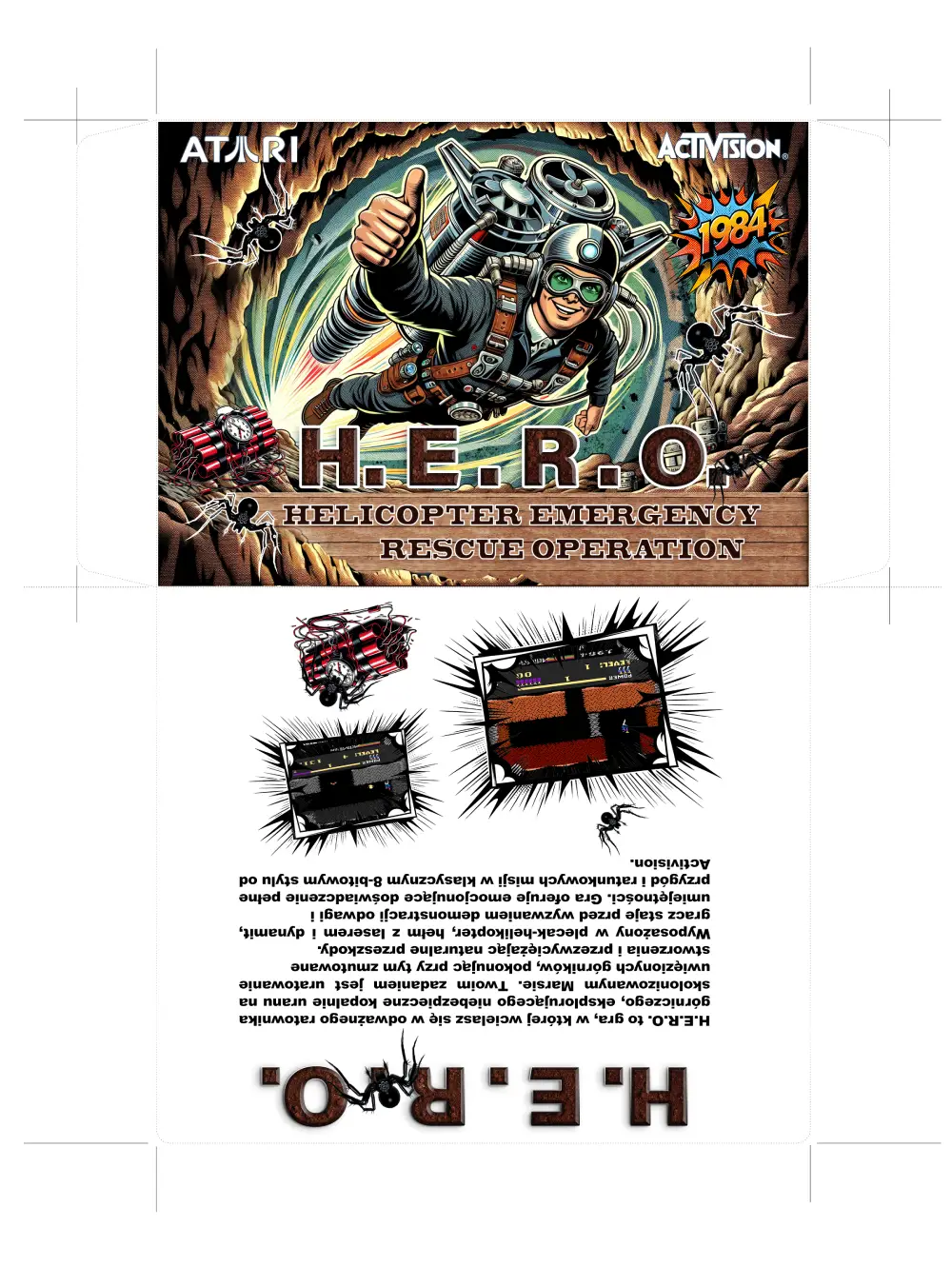
About Us

Ataricovers.com is a website dedicated to fans of classic Atari games. Our mission is to design new covers for old games, as well as to collect and share high-quality manuals and promotional materials related to Atari titles. Driven by passion and community involvement, we are building a unique archive that helps preserve and reimagine the legacy of this iconic brand for current and future generations of gamers.

